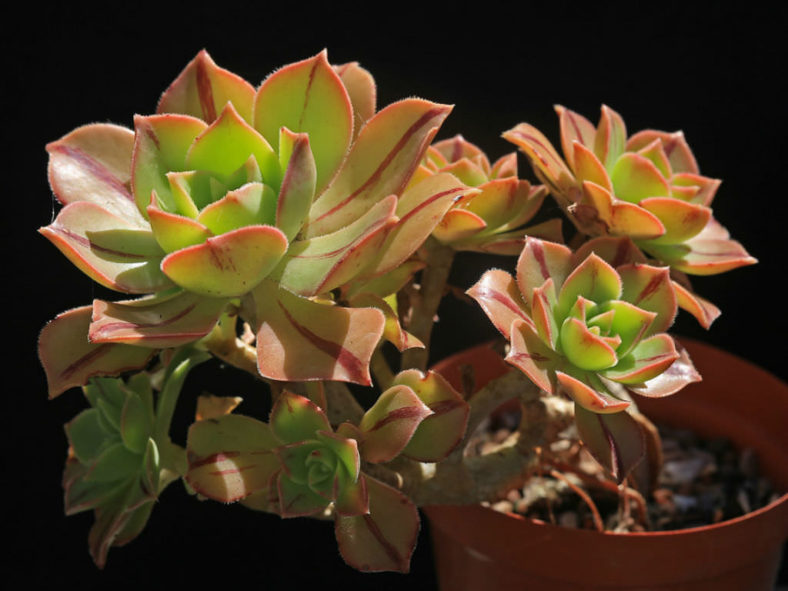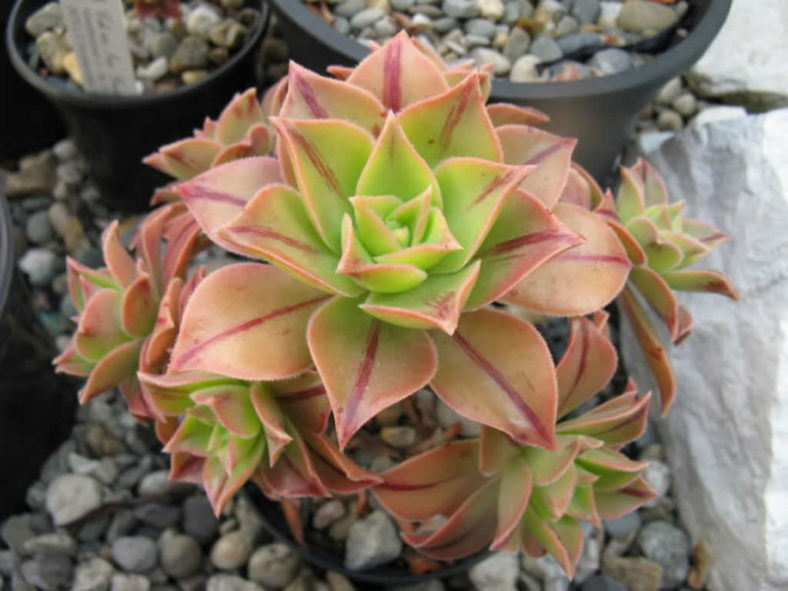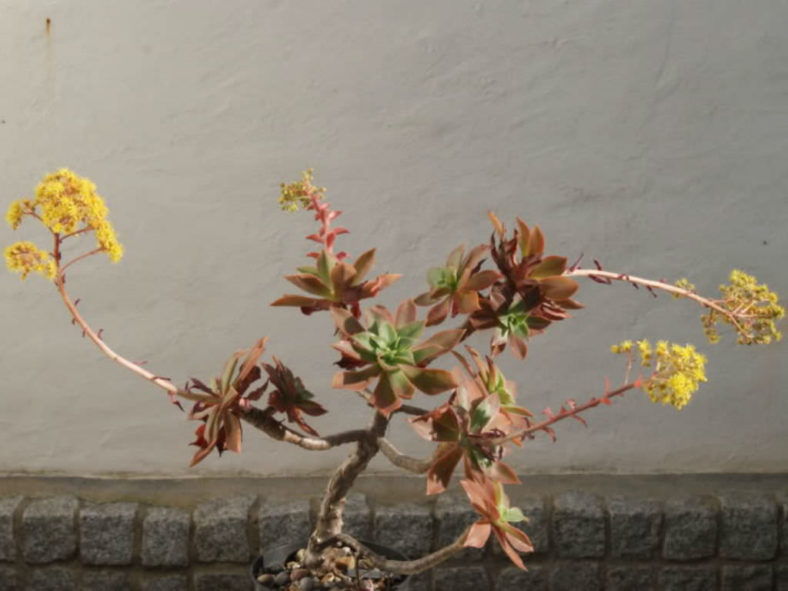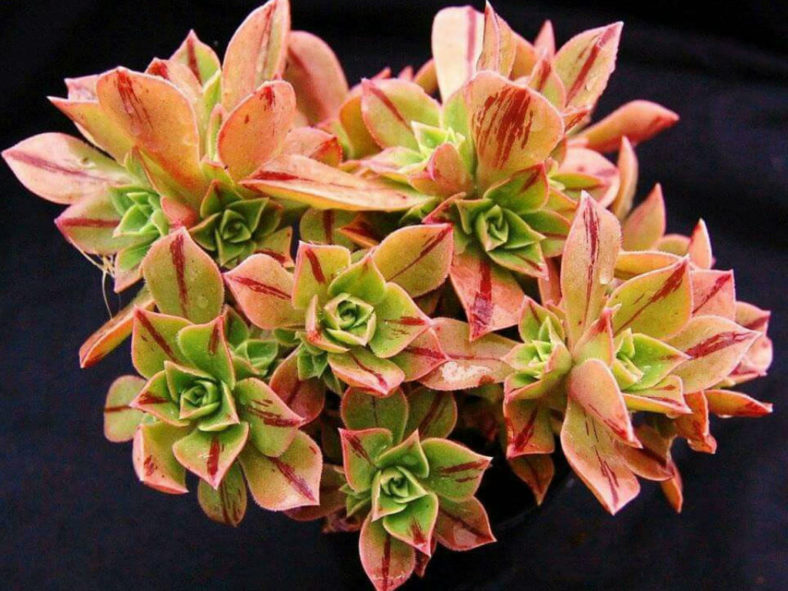Scientific Name
Aeonium leucoblepharum Webb ex A.Rich.
Synonym(s)
Aeonium chrysanthum, Sempervivum chrysanthum, Sempervivum leucoblepharum
Scientific Classification
Family: Crassulaceae
Subfamily: Sempervivoideae
Tribe: Aeonieae
Genus: Aeonium
Origin
Aeonium leucoblepharum is native to mountains in Yemen and northeastern Africa, from Ethiopia and Somalia to Kenya and Uganda.
Description
Aeonium leucoblepharum is a succulent shrub with sprawling or hanging, branched stems with prominent leaf scars and rosettes of pointed, spoon-shaped leaves at the tips of the branches. It can grow up to 6.6 feet (2 m) tall. The leaves are fleshy, smooth, yellowish-green to dark green, usually with a strong red to brownish central stripe and reddish along the margins. They can measure up to 4.4 inches (11 cm) long and 2 inches (5 cm) wide. There are specimens without a midstripe on the leaves and others with less pointed leaves but still with the central stripe.
The flowers are star-shaped, 7- to 10-merous even on the same plant, yellow, occasionally reddish. In spring, they appear in ovoid or dome-shaped clusters at the end of stalks that can grow up to 6 inches (15 cm) long.

Hardiness
USDA hardiness zones 9b to 11b: from 25 °F (−3.9 °C) to 50 °F (+10 °C).
How to Grow and Care
Aeoniums do not like hot or dry weather. In summer, they may go dormant and do not require any water except in arid conditions. In extreme heat, their leaves will curl to prevent excessive water loss. Growing them in moist shade will keep them growing, but their true growth season is winter to spring when temperatures are cool, 65 to 75 °F (18 to 24 °C), and damp. In the winter, water whenever the soil has dried out. Test by poking your finger down into the soil an inch or 2 (2.5 to 5 cm). Too much moisture or allowing them to sit in wet soil will cause root rot.
A sandy loam or regular potting mix is better than a mix specifically for cacti and succulents since Aeoniums need some moisture. If you grow them in containers, repot them with fresh potting soil every 2 to 3 years.
Feed during the growing season with a half-strength balanced fertilizer every month or so. Do not feed while the plant is dormant.
Learn more at How to Grow and Care for Aeonium.
Links
- Back to genus Aeonium
- Succupedia: Browse succulents by Scientific Name, Common Name, Genus, Family, USDA Hardiness Zone, Origin, or cacti by Genus
Photo Gallery
Click on a photo to see a larger version.


